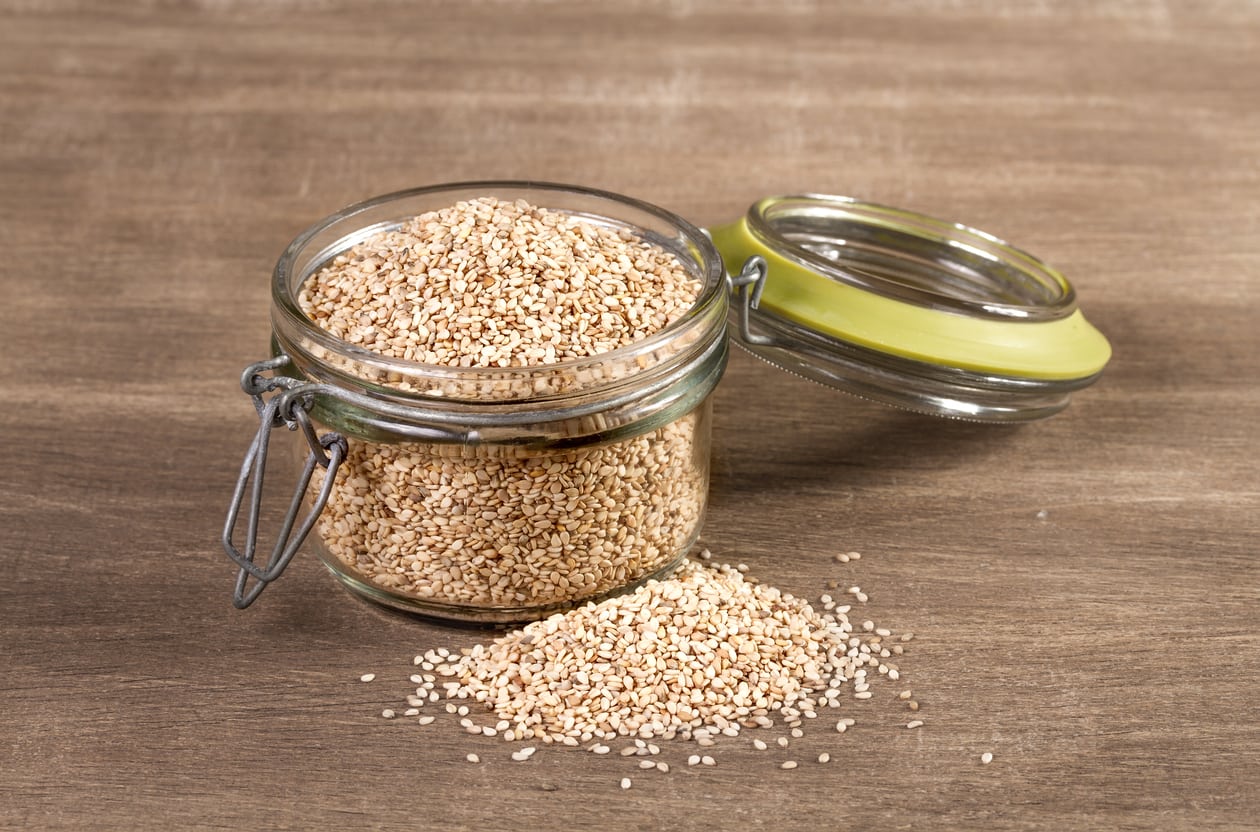Sesame Seed Drying – How To Dry Sesame Seeds From Your Plants


Sesame plants (Sesamum indicum) are lovely plants with attractive, dark-green leaves and tubular white or pink flowers. Best of all, these are the plants that produce sesame seeds. Everybody likes sesame seeds on bagels, sushi, and stir-fries, and the tiny seeds can also be ground into sesame oil and tahini paste. If you’ve got a garden, you may like to start growing your own. Read on for tips on drying and storing sesame seeds.
Sesame Seed Drying
Sesame plants grow well in your backyard in a sunny area. They can grow to 6 feet (2 m.) tall. The plants need between 100 and 130 growing days in warm air and soil before you can harvest the seeds. The tubular flowers develop into long, narrow seed pods. As the plants mature, the pods ripen. They are ready for harvest when they are brown and crack a little. Often, seed pods on the lower branches of the sesame plant ripen first. Sometimes they ripen while the upper plant is still flowering. Collect the pods as they ripen since overripe pods split open, spilling their seeds on the ground. After you collect the pods, drying sesame seeds is the next step. How to dry sesame seeds? As you pick off the ripe seed pods, place them on newspapers to dry. You don’t have to put them in the sun, but when you are drying the seeds, you must store them in a dry area. You’ll know they are done drying when the pods are brittle. At this time, harvest the seeds by cracking open the pods. Do this gently so you can get all of the seeds and not lose any. The seeds are light-colored and flat. Each pod contains some 50 to 80 seeds. The size is quite small, and it is said that you need some 15,000 seeds for one pound (0.5 kg.). If you get some of the pod pieces mixed in with the seeds, use a colander to sift them. Alternatively, you can clean chaff from the seeds by running a fan over the seeds to blow off the dried pod pieces.
Storing Sesame Seeds
Once you harvest the sesame seeds from the dried pod, you can store them for some time. For short term storage, place them in sealed glass jars in a dark kitchen cupboard. For longer term sesame seed storage, freeze the seeds.
Sign up for the Gardening Know How newsletter today and receive a free copy of our e-book "How to Grow Delicious Tomatoes".

Teo Spengler is a master gardener and a docent at the San Francisco Botanical Garden, where she hosts public tours. She has studied horticulture and written about nature, trees, plants, and gardening for more than two decades, following a career as an attorney and legal writer. Her extended family includes some 30 houseplants and hundreds of outdoor plants, including 250 trees, which are her main passion. Spengler currently splits her life between San Francisco and the French Basque Country, though she was raised in Alaska, giving her experience of gardening in a range of climates.